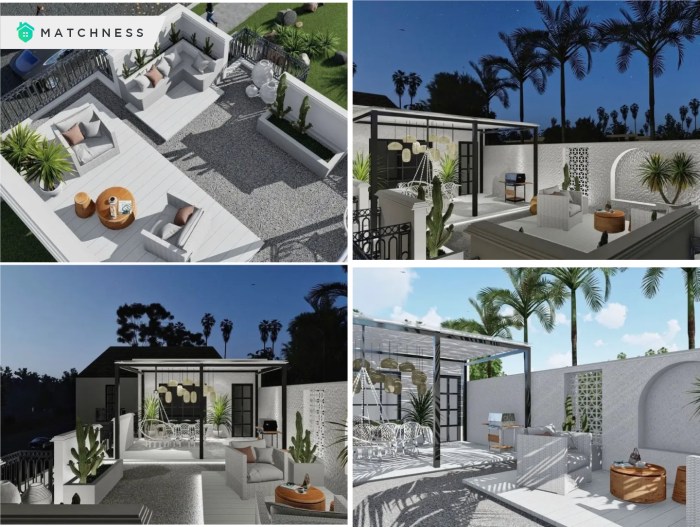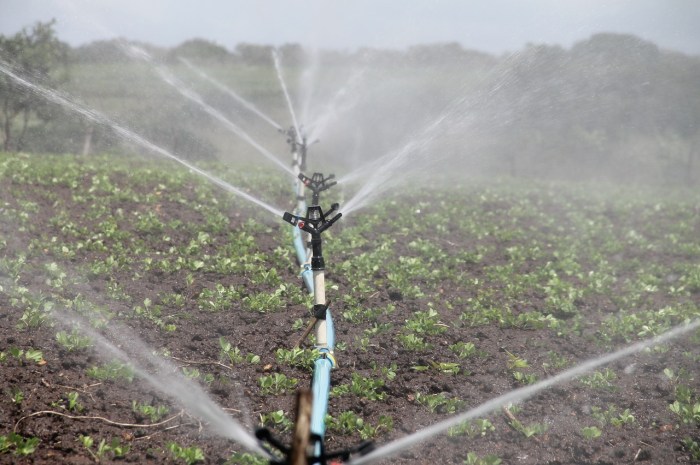Trends in rooftop architecture for modern homes are reshaping our living environments, merging aesthetics with functionality. This exciting evolution is not just about style; it’s a journey towards sustainability and smart living that transforms rooftops into vibrant, usable spaces.
With innovative roofing materials that prioritize durability and eco-friendliness, homeowners are now more conscious of their choices. The rise of green roof systems showcases the benefits these installations offer, especially in urban areas, while rooftop living spaces have become the ultimate retreat for relaxation and entertainment. Coupled with the integration of smart technologies, these trends illustrate a future where rooftops don’t just top buildings—they enhance our quality of life.
Innovative Roofing Materials

The evolution of roofing materials has been significant in modern architecture, with a notable shift towards innovation and sustainability. This transformation is not merely aesthetic; it encompasses functionality, energy efficiency, and environmental responsibility. As homeowners seek to enhance their living spaces while minimizing their carbon footprint, innovative materials are becoming essential in rooftop architecture.Modern roofing materials are diverse, combining advanced technology with sustainable practices to improve both durability and aesthetics.
For example, materials such as thermoplastic olefin (TPO), ethylene propylene diene monomer (EPDM), and green roofing systems are increasingly popular. These materials provide homeowners with options that resist harsh weather conditions, reduce heat absorption, and are recyclable at the end of their life cycle.
Latest Sustainable Roofing Options
Sustainable roofing materials not only help in reducing environmental impact but also offer significant long-term benefits such as energy efficiency and cost savings. The following options exemplify the latest advancements in sustainable roofing:
- Green Roof Systems: These systems incorporate vegetation into the roofing structure, providing insulation, reducing stormwater runoff, and enhancing biodiversity. They absorb CO2 and can lower urban temperatures, contributing to microclimate regulation.
- Cool Roofs: Made with reflective materials, cool roofs are designed to reflect more sunlight and absorb less heat than traditional roofs. This reduces the urban heat island effect and lowers energy bills by decreasing the need for air conditioning.
- Recycled Roofing Materials: Options like recycled rubber tiles and reclaimed wood shingles showcase how waste materials can be transformed into stylish and functional roofing solutions, promoting a circular economy.
- Solar Roofing: Integrating photovoltaic cells into roofing materials allows homeowners to harness solar energy, reducing reliance on fossil fuels. Products like solar shingles combine energy generation with traditional roofing aesthetics.
The impact of technology on roofing materials has been profound, enhancing not just durability but also aesthetics. Innovations in material science have led to the development of coatings that increase lifespan and resistance to environmental factors such as UV radiation and moisture.
Technological Advancements in Roofing Durability and Aesthetics
The fusion of technology and design has resulted in roofing materials that not only perform exceptionally but also satisfy aesthetic desires. Noteworthy advancements include:
- Smart Roofs: These roofs utilize sensors to monitor temperature, humidity, and even structural integrity, providing real-time data that can help in maintenance and energy efficiency improvements.
- High-Performance Coatings: Innovative coatings can prevent algae and moss growth, enhance UV resistance, and improve thermal performance. These coatings also come in various colors and finishes, allowing for customization without compromising functionality.
- Lightweight Composite Materials: These materials, often made from a blend of polymers and other resources, are easier to handle and install, reducing labor costs and potential structural load on a home.
- 3D-Printed Roof Tiles: Advanced 3D printing technology enables the production of customized roof tiles that can mimic natural materials, providing unique aesthetic options while minimizing waste.
The integration of these innovative materials and technologies signifies a shift in the architectural landscape, enabling modern homes to not only look stunning but also function efficiently in terms of energy use and environmental impact.
Green Roof Systems: Trends In Rooftop Architecture For Modern Homes
Green roofs have emerged as a dynamic solution for enhancing urban environments, integrating nature into modern architecture. These systems, composed of vegetation planted over a waterproofing membrane, provide numerous benefits, including improved air quality, reduced urban heat, and enhanced aesthetic value. As cities grapple with the challenges of climate change and urbanization, green roofs offer a sustainable avenue for creating livable spaces.The installation of green roofs involves a meticulous process that requires careful planning and execution to ensure long-term viability.
There are two primary types of green roofs: extensive and intensive, each catering to different design and maintenance needs.
Installation Processes for Green Roofs
The installation of green roofs typically follows a series of defined steps that can vary depending on the type of system being implemented. Understanding these processes can help homeowners and builders appreciate the complexity and benefits of green roofing.
1. Structural Assessment
Before installation begins, a thorough evaluation of the building’s structure is essential. This ensures that the roof can support the additional weight of the green system, which includes soil, plants, and water.
2. Waterproofing Layer
For descriptions on additional topics like Cost-effective rooftop insulation options available, please visit the available Cost-effective rooftop insulation options available.
A high-quality waterproof membrane is installed to prevent water leakage into the building. This is crucial for maintaining the integrity of the structure beneath the green roof.
3. Drainage Layer
A drainage layer is added to facilitate proper water runoff, preventing water accumulation that could damage the roof structure. This layer typically consists of lightweight materials designed to hold moisture while allowing excess water to escape.
4. Growing Medium
The growing medium, or soil, is applied over the drainage layer. This soil must be specially formulated to support the specific types of vegetation chosen for the green roof, ensuring optimal growth and sustainability.
5. Plant Selection and Installation
Depending on the type of green roof, various plant species are selected for installation. Extensive roofs often feature drought-tolerant sedums, while intensive roofs may include a wider variety of plants like grasses, shrubs, and even small trees.
6. Irrigation Systems
For intensive green roofs, an irrigation system may be necessary to provide consistent moisture, particularly in dry seasons. This can include drip irrigation or other water-efficient solutions.
7. Maintenance Plan
After installation, a maintenance plan should be established to ensure the longevity of the green roof. Regular checks for plant health, irrigation needs, and structural integrity are essential for sustaining the benefits provided by the green roof.
“Green roofs are a sustainable solution that transforms unused spaces into thriving ecosystems.”
Examples of successful green roof projects highlight the versatility and effectiveness of these systems in modern residential designs. One notable example is the Bosco Verticale in Milan, Italy, where two residential towers feature lush vertical gardens that not only enhance the building’s aesthetic but also improve air quality and provide habitats for urban wildlife. Another impressive project is the Vancouver Convention Centre in Canada, which incorporates a six-acre green roof that promotes biodiversity and serves as a natural insulation layer.These projects demonstrate how green roofs can be integrated into urban architecture, providing ecological benefits while redefining urban landscapes.
Rooftop Living Spaces

The transformation of rooftops into usable living areas has become a hallmark of modern architecture, reflecting a growing trend towards maximizing space in urban environments. These spaces not only enhance the aesthetic appeal of homes but also provide a unique opportunity for outdoor living among the hustle and bustle of city life.Design elements that effectively convert rooftops into livable spaces include thoughtful layouts, appropriate materials, and a harmonious blend with the existing structure.
Key features often include safety railings, durable flooring options, and integrated seating arrangements that invite relaxation and social gatherings.
Popular Amenities in Rooftop Spaces
To create a truly functional and appealing rooftop living area, a variety of amenities can be incorporated. These features can significantly enhance the utility and enjoyment of the space. Among the most popular amenities are:
- Lounge Areas: Comfortable seating with cushions and shade structures to encourage relaxation.
- Outdoor Kitchens: Fully equipped spaces including grills, sinks, and countertops for al fresco dining.
- Fire Pits: Cozy elements for warmth and ambiance during cooler evenings.
- Garden Beds: Spaces for growing herbs, flowers, or vegetables, promoting sustainability.
- Water Features: Fountains or small ponds that add a tranquil environment.
- Lighting: Ambient and task lighting to create atmosphere and ensure functionality at night.
Planning a Rooftop Garden or Terrace
Creating a rooftop garden or terrace requires careful planning to ensure the structure can support the added weight and that the design meets aesthetic and functional requirements. The planning process can be organized into several key steps:
- Assess Structural Integrity: Consult with a structural engineer to evaluate whether the roof can support additional weight, including soil and plants.
- Choose the Layout: Plan the arrangement of different elements like seating, planters, and pathways for both aesthetics and functionality.
- Select Appropriate Plants: Choose low-maintenance and drought-resistant plants that are suitable for the local climate and rooftop conditions.
- Implement Efficient Irrigation: Consider drip irrigation systems or self-watering planters to reduce maintenance and ensure plant health.
- Incorporate Sustainable Practices: Utilize green materials and consider energy-efficient options to minimize environmental impact.
- Obtain Necessary Permits: Check local regulations and secure permits if required for construction and landscaping.
Smart Rooftop Technologies
The integration of smart technology into rooftop designs is revolutionizing modern homes, enhancing both functionality and sustainability. As urban living becomes increasingly sophisticated, these innovations are paving the way for energy-efficient and user-friendly living environments. Smart rooftop technologies are not just about aesthetics; they play a crucial role in optimizing energy use and improving the quality of life for residents.Smart roofing systems feature a range of technologies designed to maximize energy efficiency and automate various functions of the rooftop space.
These systems typically incorporate sensors, smart controls, and connectivity features that allow homeowners to monitor and manage their energy consumption effectively. The adoption of these technologies supports the broader goal of reducing carbon footprints while increasing the comfort and usability of living spaces.
Energy Efficiency Benefits, Trends in rooftop architecture for modern homes
Implementing smart rooftop technologies provides significant energy efficiency benefits, as they can adapt to real-time environmental conditions. Utilizing automated systems, these rooftops can optimize energy use, which contributes to lower utility bills and reduced energy waste. Key elements that enhance energy efficiency include:
- Solar Panels with Smart Monitoring: Integrated solar power systems equipped with smart monitoring allow homeowners to track energy production and consumption in real time, optimizing solar energy use.
- Automated Shading Systems: These systems automatically adjust to control sunlight exposure, reducing the need for air conditioning and maintaining comfortable indoor temperatures.
- Rainwater Harvesting Sensors: Smart sensors monitor rainfall and automatically switch between harvesting and drainage modes, ensuring efficient water management for irrigation and other uses.
- Smart Roof Coatings: These coatings can reflect sunlight, helping to reduce heat absorption and maintain cooler rooftop temperatures, which can diminish cooling costs.
Innovative Features for Connectivity and Automation
Modern smart rooftops incorporate a variety of features that enhance connectivity and automation, significantly improving the user experience. These technologies not only enhance convenience but also provide valuable data for better decision-making regarding energy usage.Some innovative features include:
- IoT Integration: The Internet of Things (IoT) enables seamless connectivity between rooftop systems and smart devices, allowing users to control heating, cooling, and lighting remotely.
- Mobile Applications: Homeowners can manage their rooftop systems via smartphone applications, providing a user-friendly interface for monitoring energy consumption and system performance.
- Automated Weather Adaptation: Systems equipped with weather sensors can adjust settings based on real-time weather data, helping to optimize energy use and maintain comfort.
- Smart Lighting Solutions: Automated LED lighting can adjust based on occupancy or time of day, reducing energy consumption while enhancing the aesthetics of rooftop living spaces.
These advancements in smart rooftop technologies are not only beneficial for the environment but also enhance the quality of life for residents, making modern homes more efficient and enjoyable.

